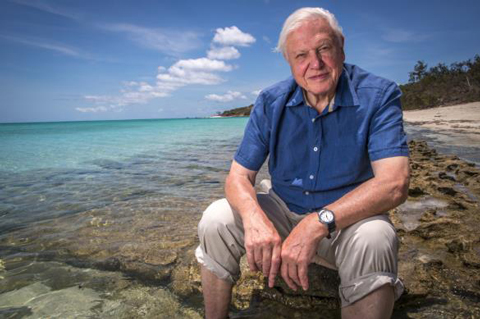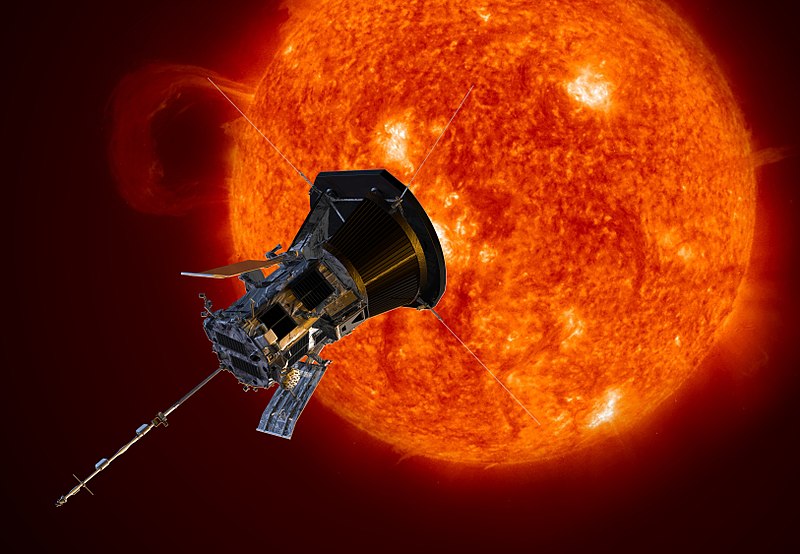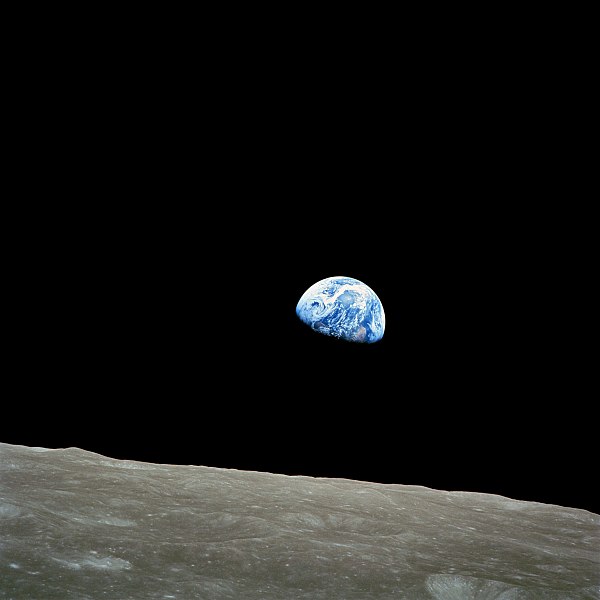2018 has been a busy year for science and technology, with everything from the environment to ancient DNA to space travel making the headlines. In chronological order, here are just a few of the most impactful stories from the past year, which made waves not just within the science community, but also throughout the wider world.

Sir David Attenborough presented the BBC Earth series Blue Planet II, which highlighted the detrimental effects of plastics in our oceans.
Source: http://dfat.gov.au/trade/economic-diplomacy/case-studies/Pages/2015-economic-diplomacy-case-studies.aspx#london
Plastic: the Blue Planet Effect.
One of the most popular and acclaimed nature documentary series of the past few years was BBC Earth’s Blue Planet II, a revival of the 2001 flagship series The Blue Planet. The final episode, which explored anthropogenic disturbances in our oceans, with a focus on the effects of pollution and microplastics on marine ecosystems, aired at the end of 2017. But the true extent of Blue Planet II’s impact was felt throughout this year.
In January, it was reported that searches for “plastic recycling” increased by 55% , arising from Sir David Attenborough’s earnest appeal for action. Since then, the ‘Blue Planet effect’ has proliferated throughout the UK at every level. In business, Iceland pledged an end to plastic packaging on its own branded products by 2023, while Waitrose stopped selling packs of single-use straws from September. In politics, the UK government has been considering a ban on single use plastics and in the charity sector, conservation NGOs such as WWF & the Marine Conservation Society saw dramatic spikes in website traffic after the series aired. Lastly, in education, the University of Southampton reported an increase in applications to study marine biology over the last year.
Two Minutes to Midnight.
Definitely one of the more concerning updates from the past year was the Doomsday Clock reaching just two minutes to midnight, the closest to 12 since U.S. and Soviet hydrogen bomb testing in 1953. The Doomsday Clock is a symbol created by the Bulletin of the Atomic Scientists (BAS) in 1947. It represents the likelihood of total human-caused global destruction, with the hypothetical cataclysm occurring at midnight. The BAS cited a failure of world leaders to “respond effectively to the looming threats of nuclear war and climate change”, making the world a riskier place than it was a year previously.

The skull of ‘Cheddar Man’. Skull measurements and genomic analysis were combined to recreate the skeleton’s facial features.
Source: https://www.jstor.org/stable/2843352
The face of the first Britons.
Another big science story this year saw the reconstruction of a 10,000 year old human skeleton, ‘Cheddar Man’, which I covered for The Bubble in more detail back in February. Cheddar Man was part of the first population to recolonise Britain after the most recent glacial period at the end of the Pleistocene.
Scientists at University College London extracted ancient DNA from the skeleton, then performed a genome analysis. The genetic findings were then combined with skull measurements to produce the facial reconstruction. They determined the man to have had dark brown to black skin, dark curly hair and blue eyes, leading scientists to draw the intriguing conclusion that modern European light skin must have evolved much later than previously assumed. The now rare combination of dark skin with blue eyes was probably quite common back when Cheddar Man was still alive.
Stephen Hawking.
On the 14th March, renowned theoretical physicist Professor Stephen Hawking passed away at the age of 76. He was famous for his work on singularity theorems, which attempt to determine when gravitation results in singularities, and his prediction that black holes produce radiation. Additionally, Hawking authored a number of commercially successful popular science books – most notably A Brief History of Time. Famously, Hawking’s life was the subject the 2014 Academy Award-winning film The Theory of Everything.
At the age of 21, Hawking was diagnosed with motor neurone disease (MND) and given an estimated two years to live. While the eventually disease left him paralysed and unable to speak, he lived with MND for over 50 years, using a speech-generating device to communicate.
Water on Mars.
NASA aren’t quite sure about life on Mars just yet, but they did find evidence of a body of liquid water under the Red Planet’s southern polar ice cap. Prior research had found evidence of features associated with salt deposits from flowing water, but this discovery back in July was the first sign of a lasting body of water. The lake is not expected to be very large and the depth of the water is unknown, although it is estimated to be at least 1 metre deep. Naturally, this is an exciting prospect for astrobiologists exploring the potential for life elsewhere in our Solar System. The findings, however, must first be verified with further studies and the research repeated in new locations to look for similar signs and signals.

The Parker Solar Probe was launched by NASA in August. It will enter the Sun’s outer atmosphere.
Source: http://parkersolarprobe.jhuapl.edu/Multimedia/Images.php
Parker Solar Probe heads to the Sun.
2018 saw the commencement of NASA’s Parker Solar Probe, on a mission to get closer to the Sun than ever before. After its launch in August, the probe managed to smash the previous record of reaching 26.55 million miles from the Sun in October. From here, it will enter the Sun’s outer atmosphere, the corona, which can reach temperatures in the millions of degrees Celsius.
The mission is intended to help us gain some insight into the mechanisms at work within the Sun. Heliophysicists want to determine why the corona is so much hotter (about 300 times) than the Sun’s actual surface, as well as learn more about the formation of solar winds to help predict “solar storms”. Just this month, American scientists have started receiving data from the Parker Solar Probe, meaning it is likely to inform some exciting science in 2019.
12 Years to Save the Planet.
In more urgent news from October, the International Panel on Climate Change (IPCC) released a hard-hitting report on the potential effects of climate change by 2030. A result of 2 years’ work and 6,000 different peer-reviewed studies, the report laid out two scenarios: one in which the global average temperature increased from pre-industrial temperatures by 1.5oC, and one in which it increased by 2oC.
Put simply, neither options are looking good. In a world of 1.5oC warming, there will be more extreme weather events; rising sea levels and flooding; drought; ocean acidification; and a dramatic increase in the number of people living in poverty. At 2oC hotter, we’ll face mass species extinctions; 10 million extra people affected by sea level rise, likely to trigger a global climate refugee crisis; a total lack of Arctic sea ice once every 10 years; and the devastating loss of whole ecosystems. The solution now must be to keep warming below 1.5oC, not 2oC as was previously recommended.
Unfortunately we’re currently on track to reach the 1.5oC limit between 2030 and 2052. If we want to prevent further warming, it’s going to take some massive societal changes, including a complete overhaul of our global energy consumption. To have any hope, we need to cut carbon emissions by 45% before 2030, then become completely carbon neutral by 2050. The take home message? The time to act is really now or never.

‘Earthrise’ is an iconic photograph of the Earth from Apollo 8 on Christmas Eve 1968.
Souce: http://www.hq.nasa.gov/office/pao/History/alsj/a410/AS8-14-2383HR.jpg
Earthrise: 50 Years On.
On the 24th December 1968, just as NASA’s Apollo 8 spacecraft orbited the dark side of the Moon, astronaut Bill Anders snapped what would become probably the most famous photograph of the Earth from space. 50 years from the day it was taken, the legacy of ‘Earthrise’ lives on. Seemingly floating alone in space, the half-illuminated Earth radiates green and blue in stark contrast to the barren grey of the Moon’s surface. Even now, ‘Earthrise’ is truly iconic.
